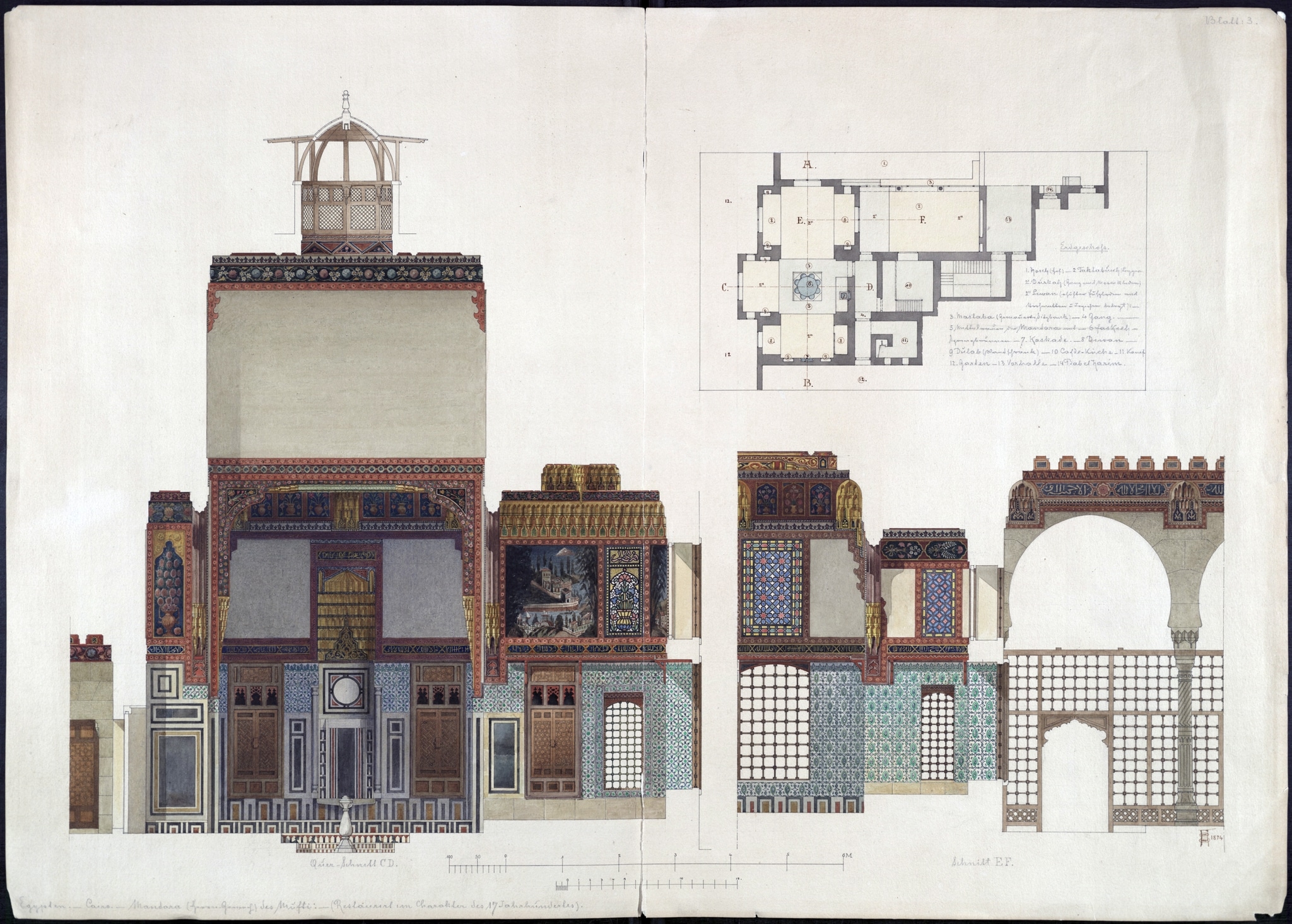This drawing made by František Schmoranz in 1874 includes two detailed cross-sections in colour and the labelled floor plan of an interior. The caption describes it as the ‘mandara (men’s chamber) of the mufti in Cairo, restored in the character of the 17th century’ (‘Egypt. Cairo. Mandara (Herrengemach) des Mufti in Cairo. Restauriert im Charakter des 17. Jahrhunderts’).
The cross-section shows three stucco and glass windows above wooden screens. Two of them feature a geometric pattern. One of them is structured by repeating red rhombus shapes with concave sides surrounded by blue intertwining circles. The main surface is surrounded by a band with rectangular perforations containing yellow glass alternating with small circular perforations containing red glass. The other is structured by repeating red eight-pointed stars and, extending from it, diagonal and straight rays in blue. Here, the main surface is surrounded by three bands, of which two are structured by rectangular perforations containing yellow glass alternating with small circular perforations containing blue glass and rectangular ones with pointed ends in red and blue. The stucco lattice is depicted by means of grey lines.
The third window is of a different typology. It is divided into two sections, one above the other. The upper one contains a pseudo-Arabic inscription in red on a yellow background with many small, perforated holes. The lower section contains the motif of flowers in an oval vase with a conical neck. A central red carnation is flanked by blue and red flowers arranged symmetrically on each side in front of a background with white perforations. The flowers in a vase motif is placed under a polylobed arch. The spandrels have many small, perforated holes on a yellow background. Both sections are framed by a band of lined holes in yellow.
25G41(CARNATION) · flowers: carnation
41A6711 · flowers in a vase
48A981 · ornament ~ geometric motifs
48A9815 · ornament ~ starforms
48C1412 · interior ~ representation of a building
